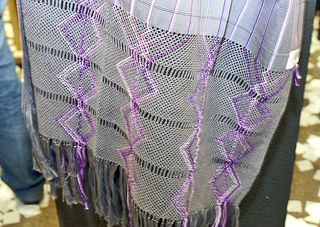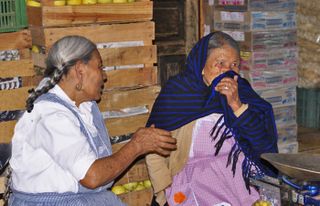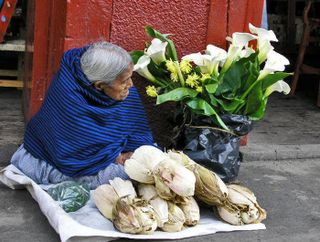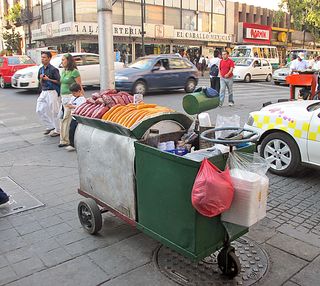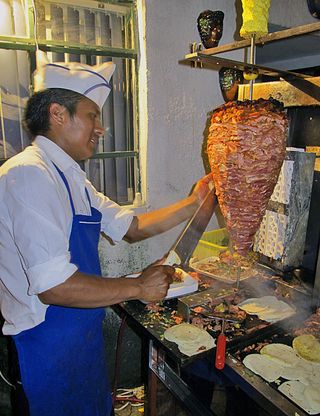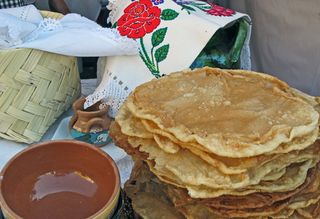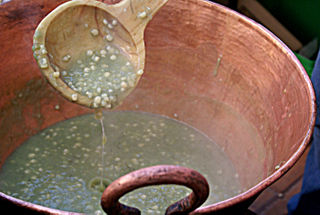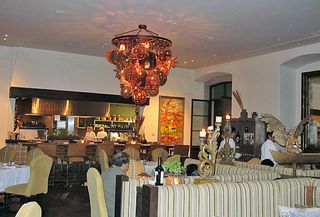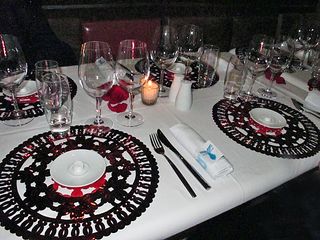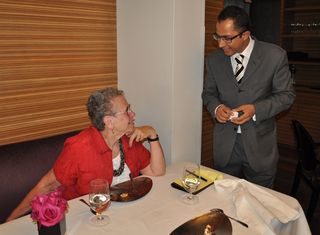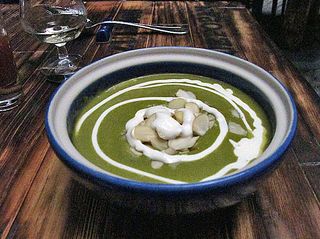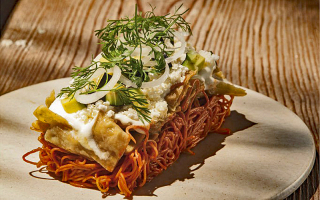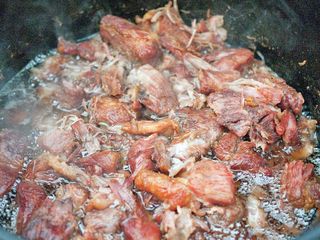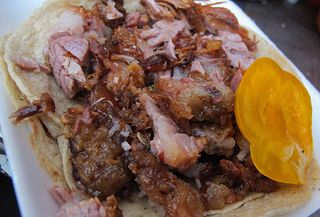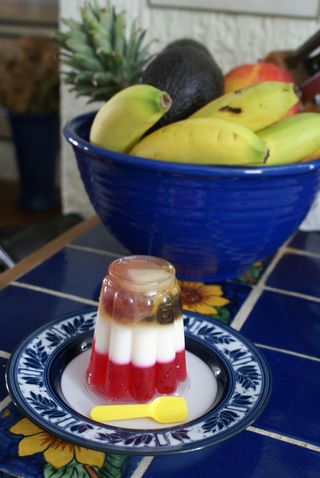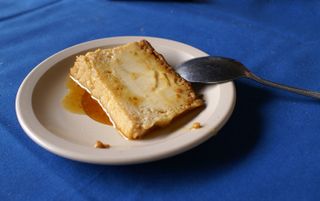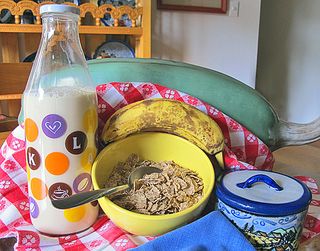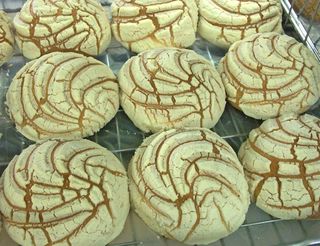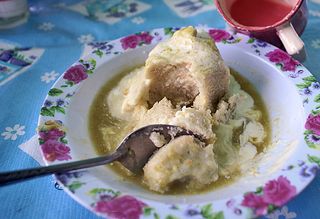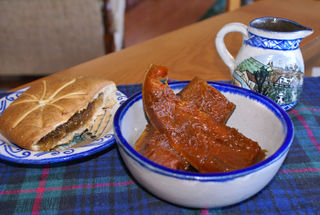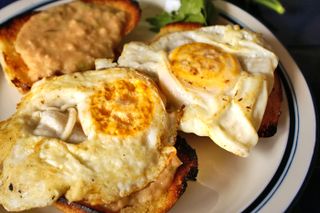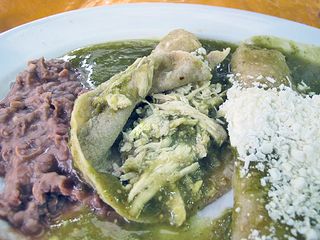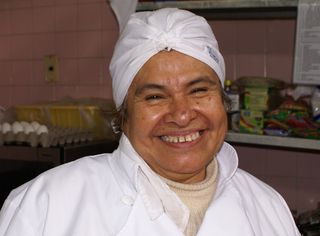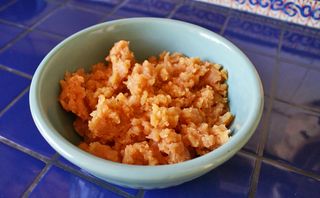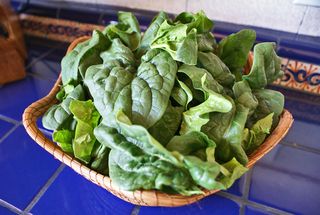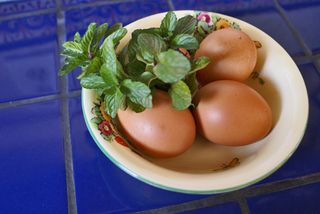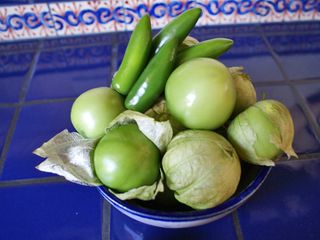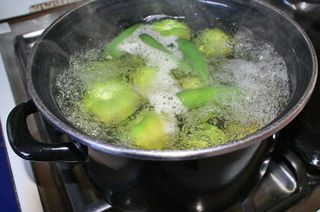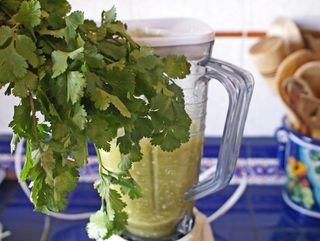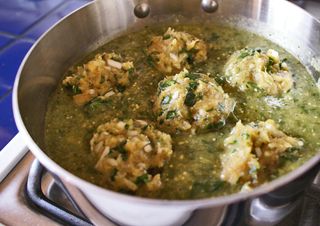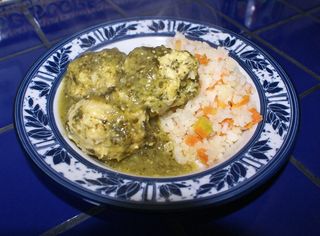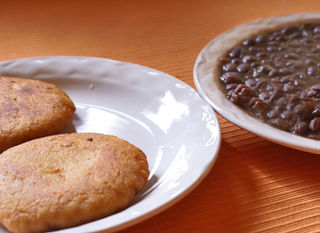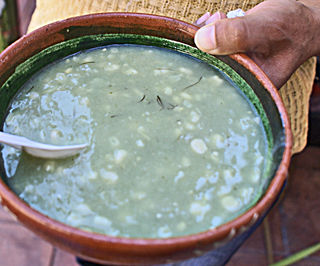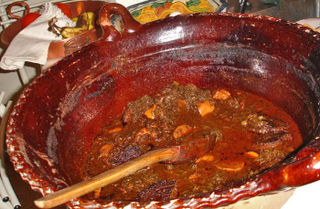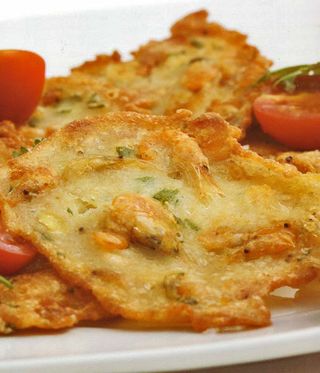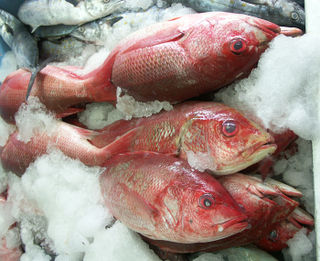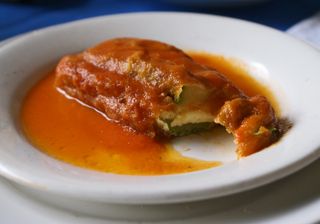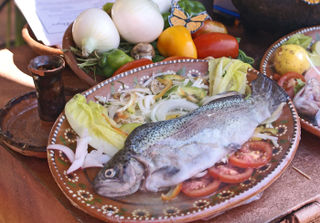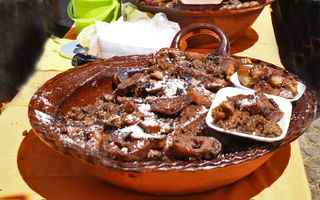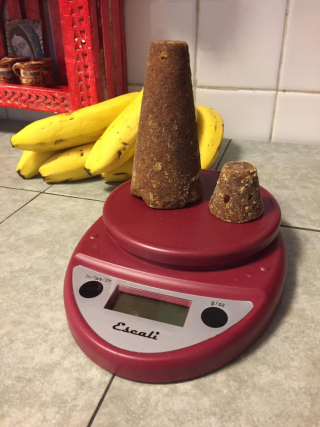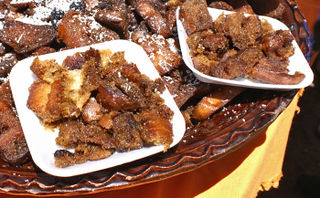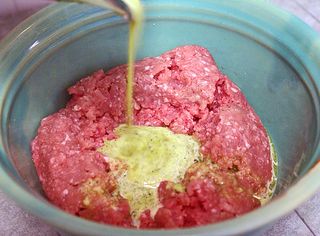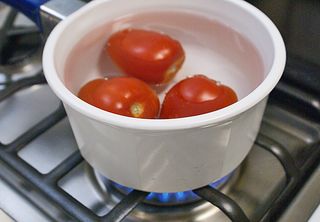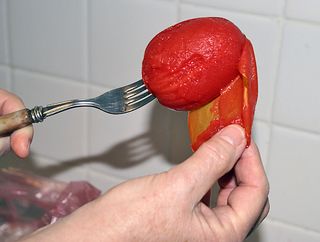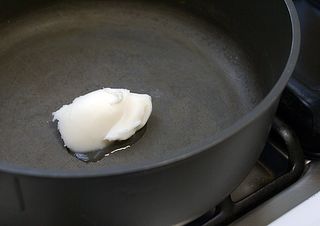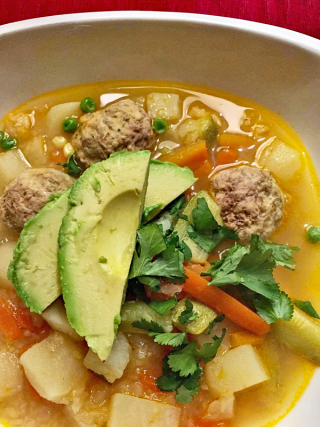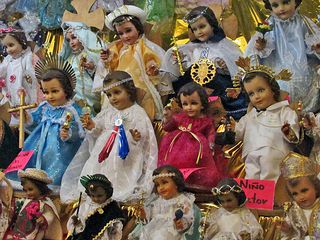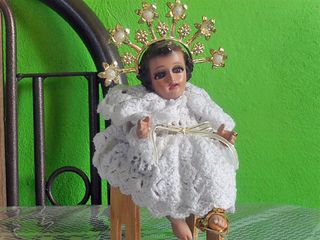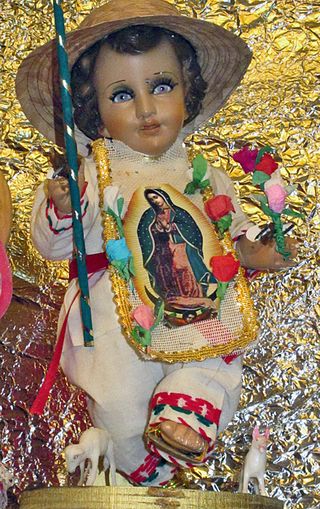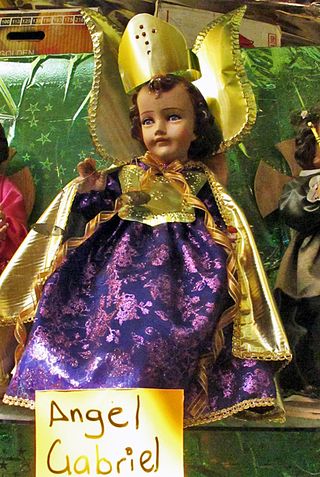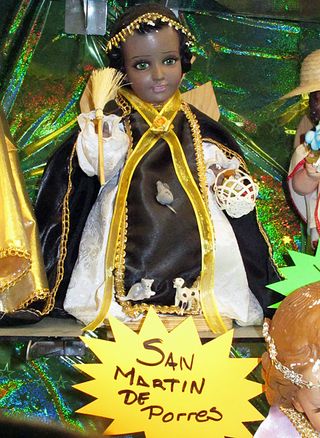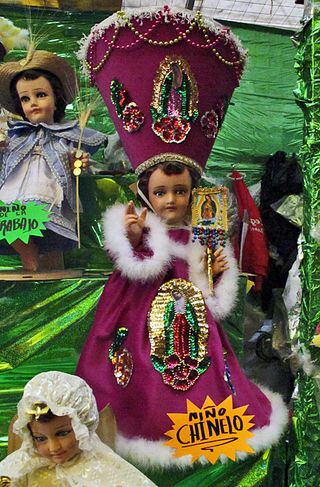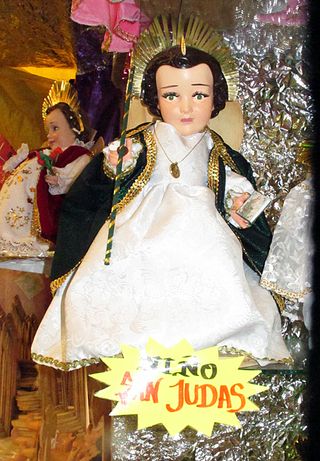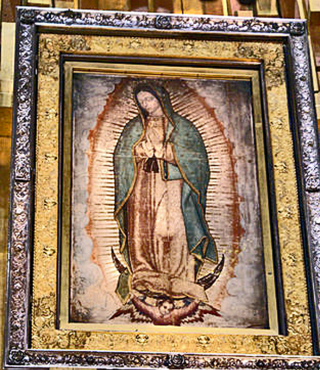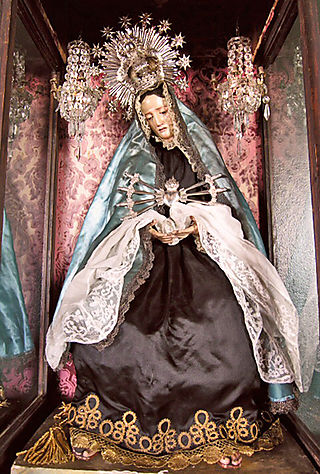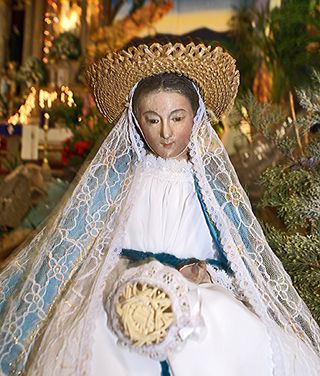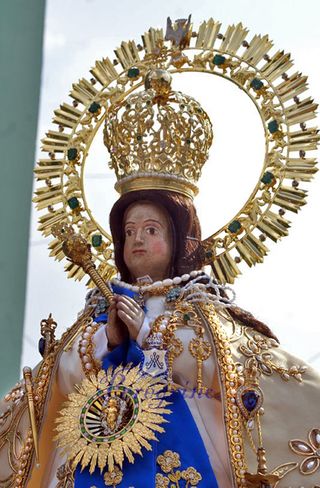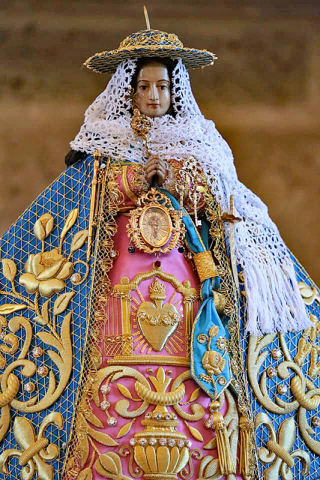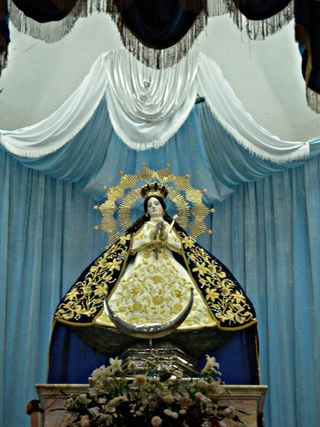First published about six years ago, this is by far the most popular of Mexico Cooks!' nearly 600 archived articles. There's just something wonderful about comfort food, no matter what culture prepares it!

Seasoning ingredients for preparing the caldo (broth) for Mexican caldo de pollo (chicken soup). Clockwise from top right in the photo: unpeeled carrots, white onions, chiles serrano, garlic, fresh bay leaves, cilantro, and thyme. I also added a big sprig of fresh hierbabuena (mint) and a smaller sprig of fresh epazote (wormseed). If you can't find fresh epazote, leave it out. The dried variety adds no flavor to any of your recipes.
There are few meals more undeniably Mexican than delicious, home-made caldo de pollo (Mexico's marvelous chicken soup, with fresh vegetables). During the winter, when the temperature is chilly even in Mexico, what better to warm us from the inside out than Mexico's traditional, rich, delicious caldo de pollo (chicken soup)? You who live in even colder countries will love it as much as we do. Nothing could be simpler to prepare. The ingredients are easy to obtain, the broth all but cooks itself, and the final preparations are simple and fast.

This beautiful chicken weighed approximately 5.5 pounds before cooking.
Mexico's chickens are perfectly suited to caldo de pollo. Yellow skin and pink flesh create a fragrantly savory stock. If you've traveled to Mexico and visited our markets, you may have wondered why our recently sacrificed raw chickens look so…so chicken-y, so golden and inviting. They're fed ground marigold petals along with their feed! The bright golden color of the flowers is transmitted not only to their skin and flesh, but also to the yolks of their eggs, which sit up high and sunny in your breakfast skillet. Several years ago, a shall-remain-nameless neighboring country to the north imported some of its frozen chicken to our supermarkets: grey, pitiful whole chickens and lumps of breast and leg meat lay in freezer compartments waiting to be purchased. Mexican housewives, used to fresh, plump chicken, looked at these icy products and recoiled. Few of these ugly corpses sold and I currently notice that no imported frozen chicken is available in any of the supermarkets I visit from time to time.
Mexico Cooks! prefers to remove as much fat as possible from the chicken before cooking, leaving only a little to give body and flavor to the broth. The skin stays on, both for color and flavor.

In the pot: the chicken back and legs, along with the seasoning ingredients and water, ready to cook.
Caldo de Pollo (Mexican Chicken Soup)
For the broth
1 whole chicken, approximately 5-6 pounds
1 1/2 white onions, peeled
2 large cloves garlic, peeled
2 large carrots, peeled and cut in half
2 chiles serrano, sliced from tip to stem end
2 bay leaves
6 stems cilantro
Large sprig fresh hierbabuena (mint)
Small sprig fresh epazote (wormseed), optional. If you can't get it fresh, leave it out.
Large pinch of thyme
Sea salt to taste
Water to cover all broth ingredients
14-quart stock pot
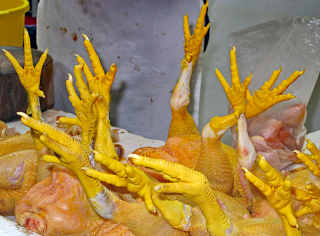
If you can buy chicken feet where you are, put several in the cooking pot to give color and depth of flavor to the broth. You'll thank me, honest you will.
Procedure
Remove as much fat as possible from the raw chicken. Remove the bag of menudencias (heart, gizzard, liver, etc). Mexico Cooks! prefers to separate the entire breast and wings from the back and legs, using the back and legs for preparing the broth and reserving the breast and wings for later use.
Put the skin-on chicken back, legs and all seasoning ingredients except the salt into the stock pot. Add cold water to cover the ingredients. Bring to a boil, lower to simmer. Skim the broth once with a wire skimmer. Simmer, partially covered, for approximately 1.5 hours. Cool slightly and add sea salt to taste. Remove all vegetables, herbs, and the chicken back and legs from the pot. Chill the broth overnight and peel off any congealed fat.
Because I prefer to eat breast meat, I often shred the cooked leg and back meat to be used in other recipes. However, when I made this batch of caldo de pollo, I took large chunks of the dark meat and added them to the broth.
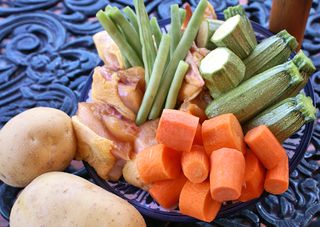
Ingredients for the final preparation of the caldo de pollo, to cook in the broth just before serving. Clockwise from top right: calabacitas (tender zucchini, about 3" long), peeled carrots, chicken breast, fresh green beans. Potatoes, ready to be peeled, are in the foreground.
To finish the caldo de pollo:
Ingredients
1/2 pound fresh green beans, broken in thirds
4 carrots, peeled and cut into 1" lengths
4 to 6 calabacitas (tiny zucchini will do), cut into 2" lengths
2 or 3 large potatoes, cut into 16 pieces
1 chayote, peeled and cut into 16 pieces–use the tender, white seed, too, it's delicious (optional)
1 large ear of fresh corn, husked and cut into sections (across the ears) approximately 2" wide
2 or 3 half chicken breasts, cut into three pieces each
2 or 3 chicken wings, pointed end sections removed
About an hour before mealtime, remove the chicken backs, legs (and the feet, if you used them) from the pot and bring the broth to a simmer. Add all of the above ingredients to the broth. Simmer for half an hour, or until the chicken and vegetables are done.
During the half hour that the vegetables and chicken are cooking in the caldo de pollo, prepare a pot of traditional Mexican rice. In a couple of tablespoons of vegetable oil, sauté the amount of rice you want (I usually use 1 or 2 cups of raw rice) until the rice is uniformly golden brown. Add 2 cups of tomato water for every cup of rice, bring to a boil, cover the pot and lower the heat to simmer until the rice is fluffy, about 20 minutes.
Tomato Water for Rice
3 raw Roma tomatoes, skinned
1/3 white onion, roughly chopped
1 small clove garlic, peeled
1 small chile serrano, stem removed but using the seeds, if you want a slightly spicy rice (optional)
2.5 cups cold water
Sea salt to taste
Add all ingredients to your blender and whiz until smooth. Strain through a fine colander and use the liquid for cooking rice.
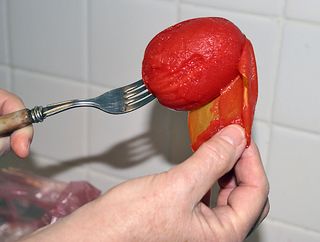
Tip for Skinning Raw Tomatoes
Bring a small pot filled with water to a boil. While the water comes to a boil, wash the tomatoes, then cut a 1/8" cross-mark in the stem end of each one. Put the tomatoes into the boiling water and boil for a minute–literally a minute, until the tomato skin begins to split. Set the timer or watch the pot to see when the tomatoes begin to split their skins. Then use a fork, tines stuck into the stem end of the tomatoes, to lift them out of the water and hold each one while you peel it. The tomatoes will be easy to peel.
To Prepare Mexican Red Rice
1.5 cups raw rice–use your preferred variety of long-grain raw rice (not pre-cooked): not Uncle Ben's, not instant rice, or other rice of that type).
2 Tbsp vegetable oil
3 cups tomato water
1 tsp salt or to taste
Heavy, lidded pot, wider than it is deep
Put the oil in the pot and over a medium flame, heat the oil until it shimmers. Add the rice and let it fry, stirring often, until the rice is light golden brown. Add all of the tomato water and the salt. Bring the pot to a boil, cover leaving the cover slightly ajar, and lower the flame to its lowest point. Allow the rice to simmer for approximately 20 minutes (use a timer!) or until all the tomato water is absorbed and the rice grains are tender.

The finished product, steaming and delicious any time of year.
At meal time, have the following on the table for garnish and further seasoning: a large bunch of fresh cilantro, stems in a glass of water; a plate of halved limones or limes, a dish of sea salt; and a cooked (not raw) or bottled table salsa of your choice. Plenty of hot-from-the-griddle corn tortillas round out your meal.
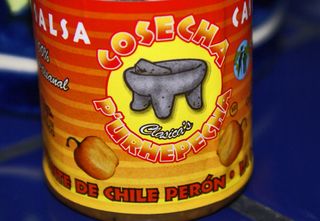
Mexico Cooks! favorite bottled salsa: Cosecha Purhépecha Salsa Casera de Chile Perón (Home-style sauce made of chile manzano, known as chile perón in Michoacán). It's made in Chilchota, Michoacán, and I normally keep a big stash of it in my Mexico City pantry.
To serve your caldo de pollo, add a large spoonful or two of steaming hot rice to each diner's bowl. Next, add chicken and a good amount of each of the vegetables. Fill each bowl with hot, fragrant broth. Every diner can then add a pinch of sea salt, some cilantro leaves, a squeeze or two of jugo de limón, and salsa to his or her own taste.
Makes four to six servings with a lot of rich broth left over for other uses. I strain the broth and then freeze it in gallon ziplock freezer bags.
Provecho!
Looking for a tailored-to-your-interests specialized tour in Mexico? Click here: Tours.




